Keeping New Year’s resolutions is hard. Who has the willpower? Here’s 10 iPhone apps that might help.
Ten iPhone Apps To Help Keep New Year Resolutions


Keeping New Year’s resolutions is hard. Who has the willpower? Here’s 10 iPhone apps that might help.
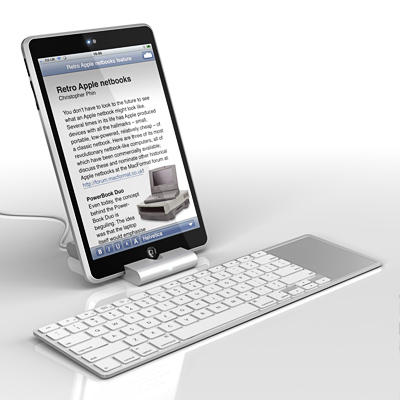
Confirming last week’s Financial Times report that Apple has rented out the Yerba Buene Center for the Arts in San Francisco for a January 26th event, Clayton Morris over at Fox News is now reporting that the January event will be “big” and focus on the “mobility space.”
Quoth Morris:
I’ve spoken to a source inside Apple who confirmed a “big” event for January.
While nothing official has been handed down from the notoriously tight-lipped company, my source took the Financial Times report one step further by saying this event will focus on the mobility space, meaning we’ll see something related to the iPhone/iPod touch product line.
Since iPhone and iPod Touch announcements are usually made in June, that means this event is going to focus on something like the iPhone, but a wholly new product. *cough* Apple Tablet. *cough cough*
[via TUAW]

If recent CNBC listings are anything to go by, someone in their programming department got wind that there is set to be an exciting new Apple product announced next month. Hot on the heels of news about CNBC’s planned airing of the Welcome to Macintosh documentary on January 4th comes word that that the 60 minute documentary MacHEADS will air a day later on January 5th, 2010 at 10PM ET.
Like Welcome to Macintosh, this isn’t a documentary I’ve seen yet, but the official site describes the documentary as an exploration of “the loyalty of Apple fanatics and their obsession with the company and its products. The documentary takes an in-depth examination of just what makes the Mac, the iPhone, and Apple’s other products seem like cultural phenomena rather than just consumer electronics.”
If you don’t have a Tivo or have pressing engagements on January 5th, it will also be airing on January 6th at 1AM ET, January 7th at 9PM ET, January 8th at 12AM ET, January 9th at 7PM ET and January 10th at 10PM ET. CNBC’s getting a lot of mileage out of this one.
If you’re interested in checking MacHEADS out, you can see the official trailer here.

The popularity of the iPod doesn’t make it immune to accusations of being the cause of society’s ills, and for the last few years, Apple has faced numerous complaints that the iPod promotes hearing loss. The complaints have been taken seriously enough by some to prompt the European Union to consider introducing legislation that would limit iPods and other portable media players to a maximum output of 85db.
Luckily, common sense seems to be prevailing in the American iPod hearing loss debate. The Ninth Circuit Court of Appeals has just affirmed a 2008 ruling that dismissed a case brought against Apple that claimed the iPod promoted hearing loss.
The original suit was brought against Apple by a Louisiana man, who hoped to escalate it to class action status. The suit claimed that the iPod had the potential to cause irreparable hearing loss, thanks to the lack of external volume meters on the iPod itself and the design of the ear buds encouraging too-deep placement. The suit was dismissed because the judge wryly noted that the lawsuit didn’t actually prove that the iPod was dangerous, but was instead just a long list of how it could possibly be made safer.
It wasn’t a suit with much merit, and it’s good to see it dismissed. Although it’s certainly conscientious to make a device safer, I hope most people realize that keeping your iPod’s volume at an acceptable level and not cramming your ear buds down into your cochleas with your thumbs are the user’s responsibility.

Former Quicktime guru Steve Perlman has been flogging his latest startup, OnLive, for awhile now. He’s hawking a thin client for gaming, which requires a bit of explanation: think of gaming in the cloud. Instead of installing an MMORPG or FPS on your Mac, you instead logon to a central server with beefy hardware, which pumps out the game to you over the Internet.
In very loose theory, that means that you can play the hottest and most technically advanced games on even the lowest-specced computers or handheld devices: the server does all the rendering, and basically streams to the user a live video of the game being played according to his or her button and mouse clicks. In even looser theory, you could play even the most graphically demanding PC games on your iPhone.
Last week, Perlman demonstrated the OnLive technology to his alma mater, Columbia University. It’s an impressive demonstration, but there’s plenty of reason to be skeptical of Perlman’s claims.
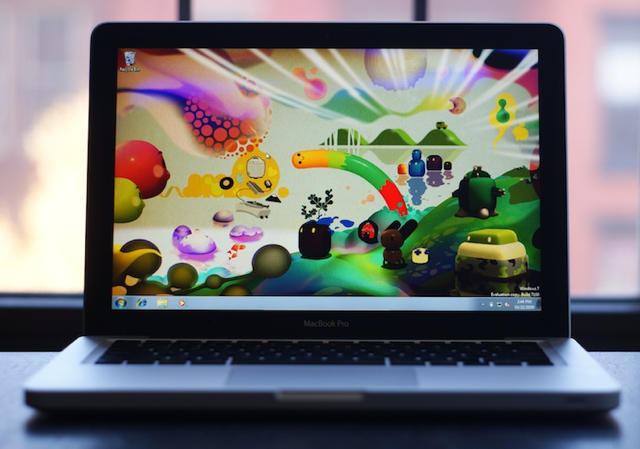
It’s less than twenty four hours until 2010, and at a time when most of us will be confronting a numb, vacant hole where our sobriety used to be tomorrow morning, it’ll be easy to overlook another hole in our day-to-day Mac lives: official Boot Camp support for Microsoft’s excellent new update to their Windows operating system, Windows 7.
You might recall that in October, Apple promised in a support document to roll-out Windows 7 support to Boot Camp before the end of 2009.
“Apple will support Microsoft Windows 7 (Home Premium, Professional, and Ultimate) with Boot Camp in Mac OS X Snow Leopard before the end of the year,” the support document notes. “This support will require a software update to Boot Camp.”
With the clock ticking, Apple Insider sought out an Apple support representative fielding Boot Camp related questions for a statement. He said that his division had still been given no update on Windows 7 Boot Camp support, and his belief was that the update was still undergoing tests, adding that it was unlikely that the update would surface anytime before the drop of the ball.
Of course, Windows 7 already runs in Boot Camp, with a few driver hiccups, so you don’t really have to wait for Apple if you don’t want to. Still, let’s look forward to completely painless Windows 7 Boot Camp support in 2010, eh? The earlier, the better.
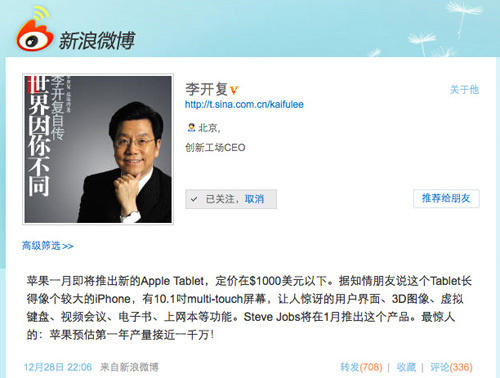
More tantalizing hints on Apple’s forthcoming tablet come their way to us today from China, where former Google China president Ka-ifu Lee has posted alleged hands-on impressions of the device on his sina.com.cn microblog.
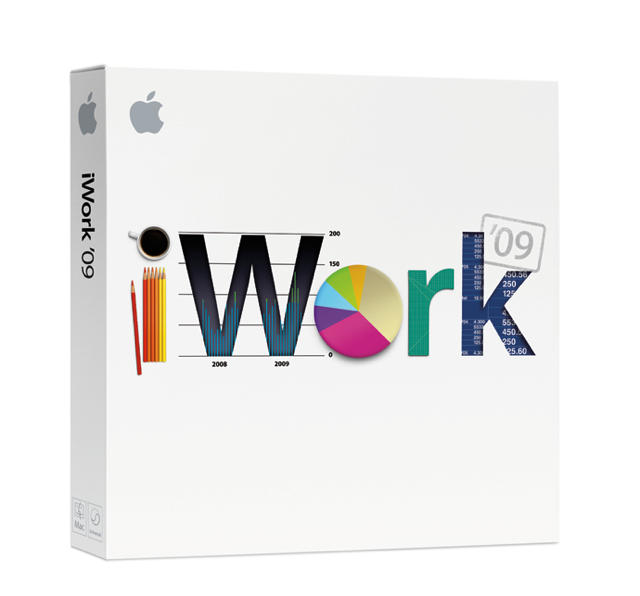
What a difference a year makes. That seems to be the take-away from new retail analysis showing a 50 percent increase in sales of iWork 2009 over iWork 2008. In the first 11 months it was available, iWork 2009 sold 50 percent more copies than iWork 2008, according to NPD Group.
Much of the credit appears to go to the popularity of Mac OS X 10.6, known as “Snow Leopard”. iWork and iLife comes bundled with the box upgrade. A single-user version costs $169 and a family-version costs $229.
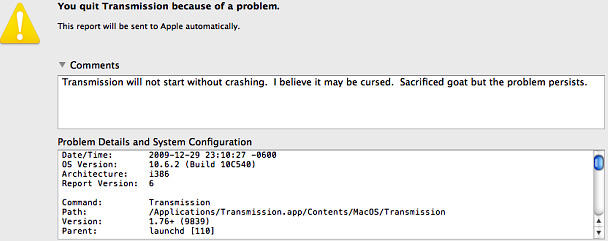
There have been times when I’ve wanted to slit a throat over the altar of Word to keep a buggy file from crashing but wonder if this is some kind of divine castigation for downloaders?
Via Digg

Apple will have a ‘blowout’ December quarter, selling 9.5 million iPhones with strong Mac and iPod demand creating $12.4 billion in revenue for the Cupertino, Calif. company, an analyst told investors Wednesday.
“Despite strong macroeconomic headwinds and ever rising investor expectations, we anticipate Apple could post material upside to recently raised consensus estimates,” wrote Kaufman Brothers analyst Shaw Wu. The company appears to be firing on all cyclinders, its iPhone, iPod and Mac units viewed as fueling the optimism.
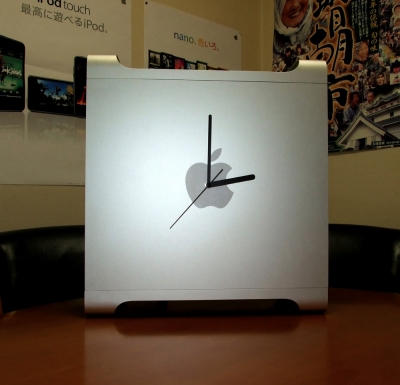
Even when they’re dead, Apple products are still timely — like the iPod clock or the G4 timepiece.
Here’s a nice step-by-step transformation of a defunct Power Mac G5 into a sleek wall clock.
It’s the handiwork of Japanese Apple fan NOBON — the same one who “printed” Fuji apples with the Apple logo.
Via NOBON

Finnish cell phone giant Nokia Tuesday told a U.S. trade court “virtually all” of Apple products, including the iPhone, iPod and Mac, infringe its patents. The move seeks to halt imports of Apple products.
The seven patents named “allow better user experience, lower manufacturing costs, smaller size and longer battery life for Nokia products.” Nokia said its complaint filed before the U.S. International Trade Commission “is about protecting the results of such pioneering development.”

It’s nice to see good work pay off. While Steve Jobs walked home with his customary $1 salary and $1 bonus for 2009 Apple COO Tim Cook — who stepped into Jobs’ shoes for five months while Steve Jobs underwent a liver transplant — made out much better: his year end renumeration for 2009 was a cool $14 million.
The vast majority of that money went to Cook in the form of $12.3 million worth of Apple stocks… a significant jump from his 2007 and 2008 stock awards of $7 million and $6 million, respectively. Cook also got a $100,000 salary raise, up to $800,000, and a cash bonus of $800,000 to match.
Don’t feel bad for Jobs, though: although that two bucks he earned in 2009 won’t even pay for a cup of coffee, his 5.5 million shares of Apple stock are currently valued at $1,163,855,000.
[via TUAW]
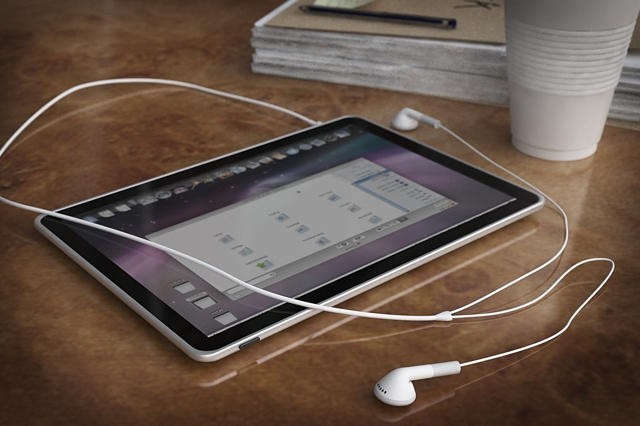
This is likely just a traffic grab, but according to the Quick PWN blog reporting “inside sources”, Apple’s forthcoming tablet will indeed be called the iSlate, but it won’t be a tablet computer: it’ll be an eBook reader, and positioned to go head-to-head with the likes of the Kindle and Nook.
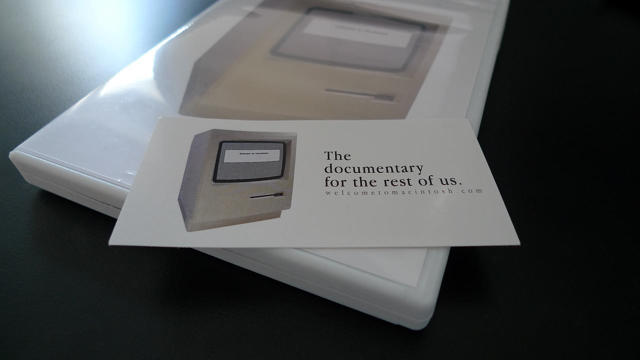
You might have missed Welcome to Macintosh when it debuted at the Macworld Expo in San Francisco earlier this year, and you may have chosen to save $15 by not picking it up on iTunes, but no need to fret : the indie documentary that intimately examines the history of Apple will be airing next Monday.
The documentary, which features interviews from Andry Hertzfeld, Guy Kawasaki, Jim Reekes and Ron Wayne, will air on CNBC on January 4th, 2010 at 9:30PM ET. Woz isn’t in it, but he liked it, describing it as “on the mark” and the best indepent film regarding Apple that he has seen. He also said how much he appreciated how “unbelievable” it was to see people “say that great of things about me.”
Ars Technica also liked Welcome to Macintosh: “”If you liked Pirates of Silicon Valley or read Revolution in the Valley, then this film is for you.”
So gentlemen, set your Tivos, then let me know if it’s worth the rent: we don’t exactly get CNBC over here in Germany.
[via TUAW, image via Thomas Marban]
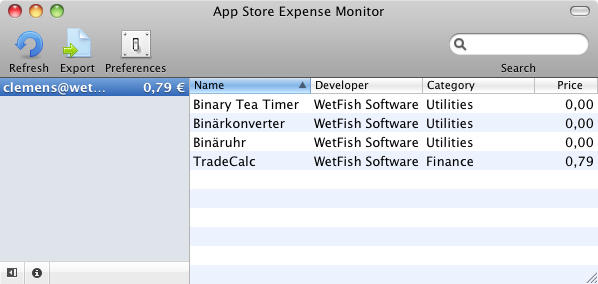
If your New Year’s Resolution, like mine, is to budget more frugally, thus sparing your kneecaps another loan shark shattering, you might want to download the App Store Expense Monitor.
if you spend as much on apps as I do, you might not: I had previously been unaware that mere numbers could punch their way through my solar plexus.
What the App Store Expense Monitor does is scrutinize your iTunes library, locating all of the apps you bought through all of the iTunes accounts on your computer, and then adds up the total based upon their current price. If the current price isn’t the same as what you paid for it, you have the option to edit the prices, which is a nice feature.
A handy if depressing little program. I had no idea how much all of those little $0.99 cents purchases could add up. Apparently, if I’d never bought an iPhone at all, I could have afforded to pick up that kidney transplant I had my eye on… and that was just in 2009.
[via Lifehacker]
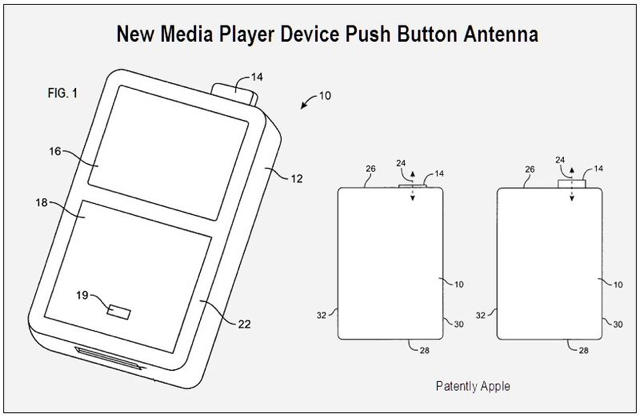
We’ve all learned to live with the iPhone’s woeful reception, but with more and more phones following Apple’s lead and circumcising any and all protuberant nubs from their streamlined smartphones, it’s easy to forget that the iPhone’s reception issues could be fixed with a protruding antenna.
Apple’s own thinking seems to be leaning towards the re-integration of an external antenna into future versions of the iPhone or iPod Touch. According to a patent recently granted to Apple by the US Patent and Trademark Office, Apple may be considering adding a push button style antenna to future devices, in order to ensure “high-quality wireless transmission and reception.”
Don’t worry: we’re not looking at a slide-out set of bunny ears. The antenna design is elegant: the iPhone would retain its streamlined design until the antenna was called for, at which point it would pop out a tiny little antenna nub. If your reception is good enough, you just push it back in.
However, as Patently Apple notes, the most interesting patent detail is that it may utilize a coaxial cable. That implies the ability to pipe in cable television.
Personally, I doubt we’ll see this patent in action any time soon: elegant or not, a pop-out antenna strikes me as too much of a kludge for Apple to take seriously. Still, the prospect of a cable ready iPhone or Apple Tablet is too tantalizing not to report.
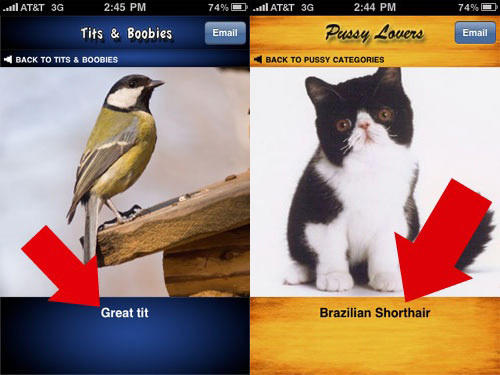
When two luridly titled apps called Tits & Boobies and Pussy Lovers appeared on the App Store, it wasn’t long before Apple told the developer to cover himself, for god’s sake. The apps were quickly pulled, even though (as you might have guessed) the apps were nothing besides a couple of suggestive puns slapped on top of slideshows of birds and cats.
Business as usual: puritanical Apple does not like even the scent of pudenda acridly wafting through the App Store. However, Apple’s stated reason for pulling the apps is rather unexpected: it appears that their main complaint about the apps was there just weren’t enough breasts and vaginas in them.
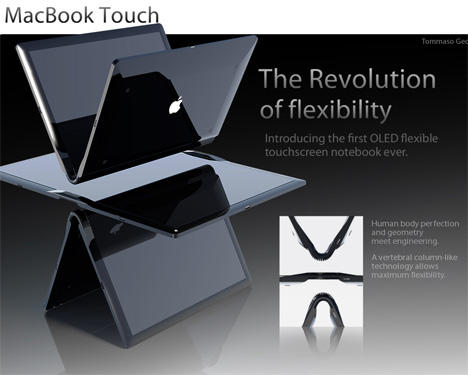
Many — if not most — people await the future, some with great anticipation, others with more anxiety. But designers are a breed apart. Designers create the future today.
Yanko Design’s brilliant 2009 design retrospective showcases the web magazine’s passion for modern industrial design and original ideas. The feature highlights a number of talented, undiscovered designers, a few of whom chose Apple products and other computer technology ideas as jumping off points for products we’d not be surprised to see in production one day soon.
Check out our gallery selection of Yanko Design’s best thought provoking tech and transportation ideas for 2009, along with a couple creepy borg-like innovations we’d just as soon see remain on the drawing board.
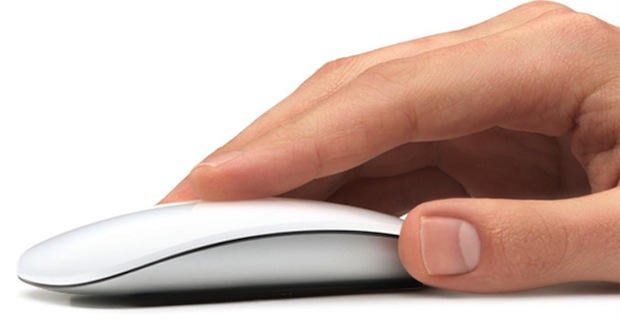
Although the iPhone or iMac has gotten the lion’s share of attention recently, Apple controversial Magic Mouse is in the spotlight. The new mouse has helped Cupertino double its share and gain 10 percent of sales, market researchers say.
“Sales in November went through the roof,” NPD Group analyst Stephen Baker told AppleInsider. Although Apple remains in third place behind Logitech and Microsoft, Baker said the Magic Mouse showed “tremendous performance” after its October introduction.

httpvhd://www.youtube.com/watch?v=T8FnACj25xM
Those purveyors of Apple-themed, auto-tuned hip-hop, the Pantless Riders, are back, two years after their first Mac or PC rap with a spoof of The Lonely Island’s I’m On A Boat.
Accompanied by the body-suit wearin’ P.C. Pain, the Pantless Riders’ message is the same as that of their last dropped beats — Macs rule — but it speaks more deeply to me, if only because I can’t help but laugh every time they surf through the stars on the facce of an iPhone or an iPod Nano, or Wozniak’s name gurgled through the servo-controlled voice box of a robot castrati.
[via Gizmodo]
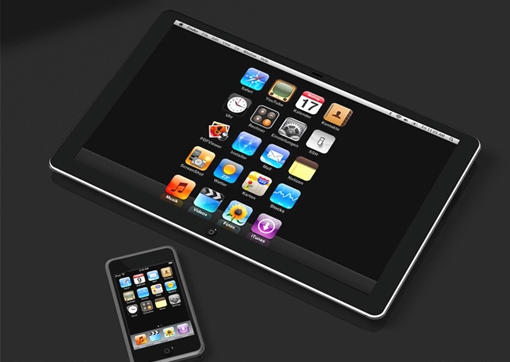
With the revaluation of recent filings made by Apple for both the Magic Slate and the iSlate trademark, it seemed a lock that Apple’s forthcoming tablet — whenever it ends up being announced — would at least eschew branding itself as a “tablet” in favor of the word “slate.” Still, Apple loves to muddy the rumor waters, so it’s no surprise that Apple has filed for another trademark that could describe a tablet device, called the iGuide.
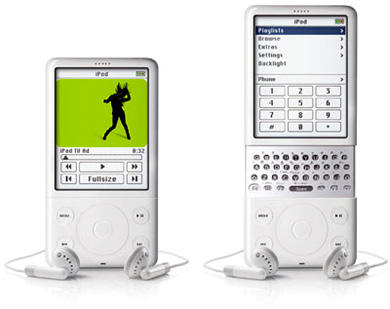
Although our record is sullied by a few occasional missteps generally caused by a lone rumor- monger tickling our plush, erogenous wishful thinking zones, the Internet’s grown remarkably adept at seeing new Apple products coming. Most gadget bloggers and tech pundits would be willing to part with a digit if Apple doesn’t at least announce a tablet next year: there are just too many supply reports, patent and trademark filings and industry insiders telling us to expect one. The same was true with the iPhone: we all knew an Apple phone was coming. We were just laughably wrong about what the iPhone turned out to be.
It’s worth keeping that in mind as we come up on January’s presumed announcement of Apple’s tablet: the chances of it being what we expect (a large iPhone) are probably as wrong as our belief that the iPhone would be just an iPod with a SIM card in it. To remind us all of exactly how wrong our predictions were, Technologizer’s Harry McCracken has posted up a fantastic speculative prehistory of the iPhone, correlating all of the earliest predictions about what the iPhone was going to be and then fact-checking them against reality.
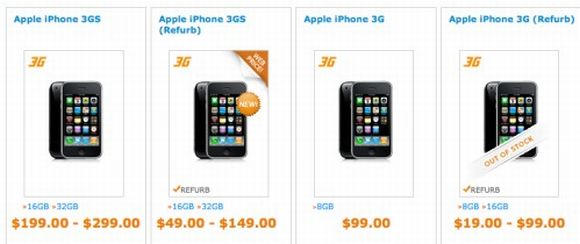
After word leaked to the Internet that AT&T was preventing residents of one of the largest and most populous metropolises in the country from buying iPhones online thanks to wide scale fraud, every hour that passed without iPhones available on AT&T’s official website was further egg-on-the-face of a carrier that has, in recent months, become synonymous with incompetence and bad customer service. There was no way it could have lasted for long, and so it didn’t: AT&T is now selling iPhones through their official site again.

Remember when forecasts of 10 million iPhones in 2009 were considered optimistic? That figure could become the new floor with Apple projected to sell 11.3 million iPhones for the fourth quarter.
Broadpoint AmTech analyst Brian Marshall is telling investors he expects Apple will sell 11.3 million iPhones for the quarter, up from a previous prediction of 10 million of Cupertino’s iconic handsets. Apple “remains the best technology company on the planet,” Marshall announced.